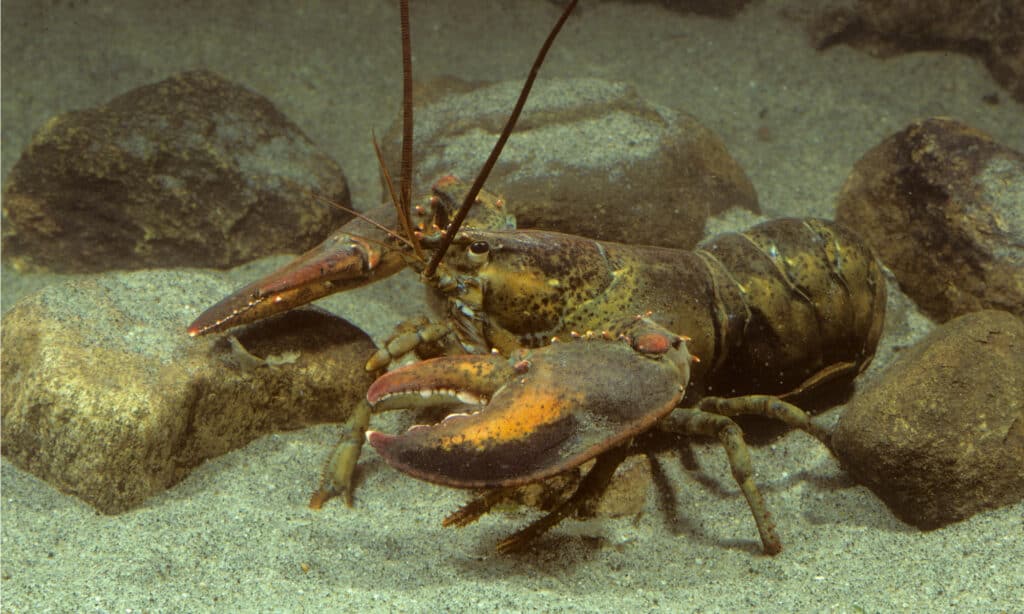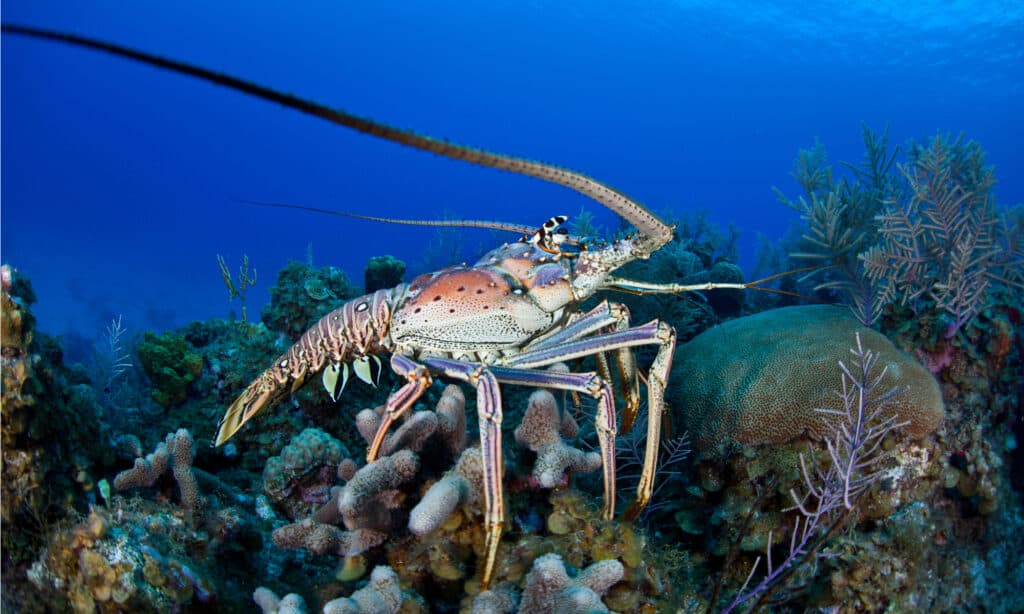Have you ever wondered about the differences between spiny lobsters and Maine lobsters? Well, you’ve come to the right place. While these lobster species are crustaceans with slight similarities, it’ll interest you to know that they are delicious, meaty seafood exploited on a wide scale because of their soft meat. They can both be used in a number of ways to make a perfect dish.
But what are the key differences between the spiny lobster and the Maine lobster? Where can you easily find them? Because they are somewhat alike, knowing where they can be found is an important factor in telling them apart.
This article will uncover all you need to know about both species of lobster, including their diets, preferred habitats, tastes, and behaviors. We will also give a detailed description of their physical appearance and their overall lifespans in the wild. Let’s begin!
Comparing Spiny Lobsters and Maine Lobsters

| Spiny Lobster | Maine Lobster | |
|---|---|---|
| Appearance | White to dark red or brown | Greenish-brown or black |
| Size | They can grow to about 60 cm or 2 feet in length and weigh about 15 pounds. | They are about 8 to 24 inches in length and may have a mass of over 20kg (44lbs). |
| Diets | Decayed plants, small mollusks, snails, and fishes. | Sea urchins, clams, snails, and mussels. |
| Habitat | The Atlantic Ocean, the Coast of Asia, the Caribbean Sea, and the South of Brazil. | Western Atlantic Coast in North America, from Canada to North Carolina |
| Taste | These species of Lobsters have a sweet and peculiar taste that differs depending on habitat. | Due to the colder habitat they inhabit, Maine lobsters are considered to taste better than spiny lobsters. |
| Lifespan | They can live for 50 years or more. | Maine lobsters can live up to 100 years. |
The Key Differences Between Spiny Lobsters and Maine Lobsters
The key differences between spiny lobsters and Maine lobsters are their claws and antennae. Spiny lobsters have smaller claws that are inedible and long antennae, while Maine lobsters have shorter antennae but larger claws with edible meat. They also differ in appearance, size, habitat, taste, and lifespan.
Spiny lobsters (Palinuridae) are a family of crustaceans with about 60 species. Even though they lack pincers, i.e., they do not have claws, they have a longer and spiny antenna relative to Maine lobsters. Sometimes, this antenna can be longer than the body. Spiny lobsters seek warmer waters by migrating to deeper water in winter, and they do this by following each other in a single file line.
On the other hand, the Maine lobster (Homarus americanus) is a crustacean with two large, strong, and unequal-sized claws for feeding. One of the claws is very sharp and used for tearing prey into smaller pieces, while the other is used for crushing the shells of mollusks. The smaller front claw is also used for directing food into the mouth. Maine lobsters can escape backward from predators by flapping their tails for a quick burst of speed.
Now, let’s look at even more differences between them.
Spiny Lobster vs Maine Lobster: Appearance

Maine lobsters have strong claws for feeding.
©Breck P. Kent/Shutterstock.com
Spiny lobsters have small pointing spines covering their bodies for protection against predators, from which their name originated. They vary in color from nearly white to dark red or brown, and they often have dark-colored spots on their tail.
Maine lobsters are generally a greenish-brown or black color when alive. Some may possess a blue shell when born. They have strong claws used for feeding. Their shell has green, black, and brown spots.
Spiny Lobster vs Maine Lobster: Size
Maine lobsters are typically between 8 and 24 inches in length and may have a mass of over 20.1 kg (44lbs). As a result of their soft meat and weight, they are considered the heaviest crustaceans globally.
However, spiny lobsters can grow up to 60 cm, or two feet, in length with a weight of about 15 pounds.
Spiny Lobster vs Maine Lobster: Habitat
Spiny lobsters are mostly found in the waters of the Atlantic Ocean, the coast of Asia, the Caribbean Sea, and the South of Brazil. They are warm water creatures and migrate to deeper waters in the winter.
Maine lobsters, on the other hand, inhabit the Western Atlantic Coast of North America, from Canada to North Carolina. They prefer colder waters, and due to the change in water temperature, their populations are becoming more abandoned in their habitat. However, like spiny lobsters, they live in muddy caves, rock reefs, crevices, or burrows on the sea floors worldwide.
Spiny Lobster vs Maine Lobster: Diets

Spiny lobsters have a similar diet to Maine lobsters.
©Ethan Daniels/Shutterstock.com
Both spiny lobsters and Maine lobsters are omnivorous and share the same diet. According to Marine Biology, they prey mostly on sea urchins. Their diet consists primarily of small crustaceans, mollusks, fish, snails, decayed plants, shrimp, mussels, and clams on the sea bottom. They use their strong mandibles to crack the shells of their prey.
Spiny Lobster vs Maine Lobster: Taste
Incredibly, both lobsters serve as food for humans. They are widely prized and valued because of their delicious claw meat, but their taste varies due to the respective habitats they live in. You should think about them for your next meal because they both have a sweet and highly flavored briny taste. Usually, Maine lobsters are considered tastier than spiny lobsters because of their colder habitat.
Spiny Lobster vs Maine Lobster: Lifespan
According to the Institute of Hematopathology, lobsters can survive for many years because of their ability to produce an enzyme known as telomerase in their organs that helps maintain long-term cell proliferation capacity and repair DNA. Spiny lobsters can live for 50 years or more, while Maine lobsters can live for about 100 years.
The photo featured at the top of this post is © Ethan Daniels/Shutterstock.com
Thank you for reading! Have some feedback for us? Contact the AZ Animals editorial team.







